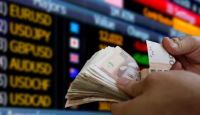Just before 5 p.m., wave after wave of smiling toddlers came bounding down the stairs, their grandparents from China breathlessly in tow.
The parents soon arrived, weary from their jobs as postal carriers, police officers, restaurant owners and financial analysts. They whisked their children, fresh from lessons in math, Chinese and Spanish, into sport utility vehicles for the short trip home.
Such is the intergenerational tableau at IP Kids, a Montessori school that opened three years ago at the meeting point of Bensonhurst and Gravesend — long a hub of immigration in Brooklyn. Here, down the block from L&B Spumoni Gardens, the aging fixture of a once Italian neighborhood, and under the elevated train tracks, New York is transforming again.
With Chinese immigrants now the second largest foreign-born group in the city and soon to overtake Dominicans for the top spot, they are reshaping neighborhoods far beyond their traditional enclaves.
Nowhere is the rapid growth of the city’s Chinese population more pronounced than in Brooklyn.
As the sidewalks on Eighth Avenue overflow with new arrivals in Sunset Park, Brooklyn’s first Chinatown, and grocery stores proliferate along 86th Street in Bensonhurst, Brooklyn’s second Chinatown, immigrants have been pushing southeast toward the ocean. The newcomers have created satellite Chinatowns in neighborhoods that have long been enclaves for European immigrants: Bay Ridge, Borough Park, Coney Island, Dyker Heights, Gravesend, Homecrest and Marine Park.
“It’s almost like a snowball going on,” said Peter Kwong, a professor of immigration and Asian-American studies at Hunter College. “Once you get started in a certain direction, people tend to gain momentum, and they are moving farther along the subway line.”
Bensonhurst has the largest number of Chinese-born residents of any neighborhood in the city, with 31,658, narrowly edging the populations in Flushing, Queens, and Sunset Park, according to a 2013 city report that offered the most recent data on immigrant New Yorkers.
Chinese immigration in the city has created several centers that could compete for the name with the original Chinatown. Chinese population is also swelling in the city’s most prosperous areas.
New working-class immigrants, primarily Mandarin speakers from Fujian province, are flooding Sunset Park, Mr. Kwong said, while the residents of southeast Brooklyn tend to have come from generally more affluent areas of southeast China, mainly Guangdong province, or from Hong Kong.
“This is the latest chapter in the evolution of our neighborhood that has deep immigrant roots,” said Mark Treyger, a city councilman from Brooklyn who was born in 1982 in Bensonhurst to parents who immigrated from the former Soviet Union.
They come for the same reasons, Mr. Treyger said, as many other immigrants: more space, affordable housing, safety and good schools. But some came, they said, precisely to get away from their fellow Chinese as a way to ease integration.
“For the kids and their education, we want less Chinese, so they can join society,” Hong Yeun Lee, 77, said in the basement of the Jay-Harama Senior Center on Ocean Avenue, where on a recent afternoon over 200 older Cantonese-speaking immigrants played badminton and table tennis with abandon.
A recent tour of southeastern Brooklyn, from Bensonhurst to Coney Island, showcased the shifting landscape; the dense commercial streets gave way to two smaller strips of restaurants, nursery schools and tutoring storefronts, supermarkets, senior centers, bubble tea shops and pharmacies.
Census figures show the remarkable changes taking place. From 2000 to 2013, the foreign-born Chinese population in New York City jumped 35 percent to 353,000, from about 262,000. During the same period the foreign-born Chinese population in Brooklyn increased 49 percent to 128,000, from 86,000.
Sam Tsang, 53, who considers himself the “mayor of Avenue U,” says he has lived in Homecrest since coming from China as a teenager. Now he imports Burmese rice, while his wife works for Councilman Chaim M. Deutsch, whose district includes Sheepshead Bay.
Mr. Tsang greeted the 32-year-old owner of a new Chinese bakery like an old friend and the chef of a 10-year-old restaurant with barbecued ducks hanging in the window the same way. Both had come from Chinatown in Manhattan for similar reasons — less stress, less competition and lower rents.
“And fresh air!” said Tim Cheng, 59, the chef at the restaurant, 1818 Seafood.
Of course, with less foot traffic, including tourists, business is not as brisk, Mr. Cheng admitted.
Mr. Tsang said: “When we moved here in 1988, on my block there were only two or three Chinese families. The majority were Jewish and Italian.”
Now, he said, there are second generation Chinese-Americans who are well educated and value the quiet of the neighborhood. “Here, you don’t see KTV nightclubs,” he said, referring to the karaoke bars that are popular among the younger set in Bensonhurst.
Paul Mak, the founder of the Brooklyn Chinese-American Association, a social service agency, said newer Chinese enclaves were less likely to become crowded with restaurants and shops because families living in those neighborhoods tended to save more of their money “so that the next generation will be able to benefit.”
“They are in a situation where they only go out for dim sum once a week,” he said.
And in a familiar New York refrain, migration patterns have been driven by real estate. In the 1970s and 1980s, when Cantonese-speaking immigrants were arriving in Chinatown in Manhattan, housing was in such demand that although rents were as low as $200 a month, immigrants would pay a finder’s fee of as much as $5,000 to secure an apartment, Mr. Mak said.
As Chinatown became saturated, more established immigrants followed the route of the N train to Sunset Park, where apartments emptied when jobs on the Brooklyn waterfront disappeared. Small businesses opened along Eighth Avenue — in Chinese culture, eight is a lucky number indicating prosperity — and families moved to the surrounding streets.
By the end of the 1990s, Mr. Mak said, the neighborhood was so desirable that single-family houses were selling for $350,000. Many of the sellers took their windfall and moved farther southeast along the N and the D subway lines.
Raymond Chan, a real estate broker in Marine Park, moved to Sheepshead Bay two decades ago, buying a house for $150,000. Now he helps Chinese families move there from Sunset Park and Bensonhurst in search of larger plots of land. He said the prices of single-family homes in Sheepshead Bay and Marine Park ranged from $500,000 to over $1 million.
While Bensonhurst’s main commercial strip has become dominated by Chinese merchants, Gravesend, Homecrest and Sheepshead Bay still have a diverse array of businesses, though the infusion of Asian stores is unmistakable.
On Avenue U in Gravesend, Vito and Beatrice Del Ponte, themselves arriving from Italy in 1970, opened Vito’s Bakery in 1980. Now Vito’s sells its rolls to the Vietnamese restaurant Pho Hoai down the block, which uses them for banh mi.
“The neighborhood has changed drastically and we’ve been here forever, since I was a little girl,” said the owners’ daughter, Sylvianne Del Ponte, 36, who works behind the counter. “It went from Jewish to Irish and Italian, and it just changed from Russian to Chinese, Mexican. As it changed over, the people who left still come back. They didn’t forget Avenue U.”
The influx of Chinese newcomers might be most apparent in a short stretch of Bensonhurst along Bay Parkway, said Steve Chung, the president of the United Chinese Association of Brooklyn, a nonprofit group. One supermarket has turned into four full-scale markets, each awning bearing the red and yellow colors of the Chinese flag.
“Grand Opening,” reads a sign at the crowded Ace Market New York. Mai Qing, a worker, was whacking vegetables with a large knife. He had no reason to fear competition. “In recent years, people need more supplies,” he said.
A few blocks away at Public School 205, students were streaming out at dismissal time. Those who did not attend the free after-school program run by the Brooklyn Chinese-American Association headed across the street to three different storefront tutoring locations for homework help.
The demographics of Bensonhurst and Gravesend have changed so much over the past decade that Nancy Tong became the first elected Chinese-American official in Brooklyn last summer when she won a contest to be the Democratic Party’s district leader for the 47th State Assembly district.
Chinese arrivals are heading as far south as there is land to settle on. Ho Cheung Li opened J&R Pharmacy on a corner of Mermaid Avenue in Coney Island eight years ago and lives upstairs. Mr. Li said that after Hurricane Sandy, older families moved out of damaged small houses off Mermaid and Neptune Avenues and Chinese families have moved in.
The foreign-born Chinese population in Coney Island/Sea Gate jumped 87 percent from 2000 to 2013, according to the Office of Applied Social Research at Queens College.
“It’s going to be more Chinese,” Mr. Li predicted, standing under a Buddhist warrior shrine in his pharmacy. Just don’t expect a Coney Island Chinatown, at least not yet, he added.
There is only the incongruously named “East Far” Chinese takeout on Mermaid Avenue. Mr. Li said people usually took the train to buy their groceries in Bensonhurst.
He is happiest, though, when he is back in Coney Island. “In the summer, you can smell the streets — it smells like fish,” he said. “I like the ocean.”
Source : The New York Times





